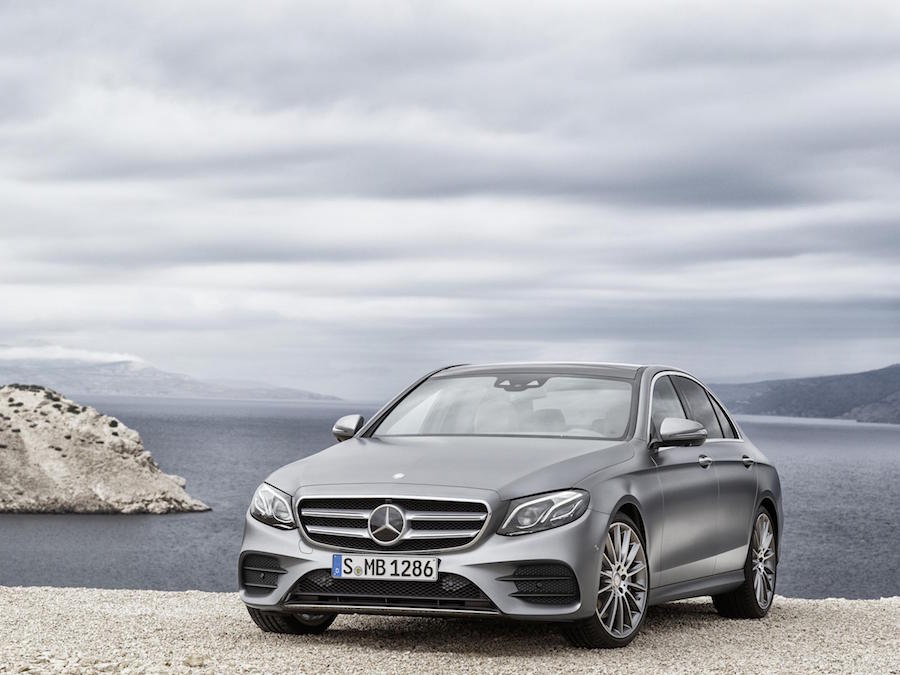What's the news?
After eight years' service and millions of units built - which have gone in everything from A-Class to S-Class, and V-Class to Sprinter - Mercedes is finally pensioning off the venerable but gruff 2,143cc four-cylinder 'OM 651' turbodiesel. It will be replaced by a new 2.0-litre unit called the 'OM 654', with this engine to be found in the E 220 d in the coming months.
Mercedes has plunged no less than €2.6 billion into the development of and production facilities for the newcomer. It's Stuttgart's first all-aluminium four-cylinder diesel, although unusually it employs steel pistons with a revolutionary stepped combustion bowl in the crown. Compared to the old 170hp/400Nm 2.1, the 654 develops 195hp at 3,800rpm and the same 400Nm, delivered over a slightly narrower band: from 1,600- to 2,400-, rather than 1,400- to 2,800rpm. Nevertheless, Mercedes claims the 2.0-litre will achieve 11 per cent quicker acceleration than the 2.1 and as it chucks out that 195hp from 1,950cc, it doesn't take a genius to work out that the specific output is a deeply impressive 100hp/litre.
The OM 654 is lighter than the old turbodiesel by more than 30kg, it only needs a single turbo to achieve nearly 200hp - and a small turbo at that, the Garrett GT40, compared to similar 2.0-litre rival units that use turbines the size of the larger GT70; that means the Mercedes' blower spools up faster and takes up less space in the engine bay - and it's considerably more compact in its physical dimensions.
That allows for two things: one, the engine is mounted directly upright, with no canting of the unit; and two, Mercedes has massively reduced the size of the exhaust gas recirculation (EGR) valve, as well as integrating the Selective Catalytic Reduction (SCR) hardware into the engine bay; it's close-coupled to the EGR on the hot side of the engine, instead of mounted in a separate chamber some way down the exhaust system underneath the car. That makes it a simpler engine to install, no matter which global market Mercedes is selling it to, as there are fewer components to relocate according to left- or right-hand drive, for instance.
Talking of applications, the 654 will be used both longitudinally (rear-wheel drive) and transversely (front-wheel drive), with four-wheel drive models benefitting too, and it will form the basis of a whole new range of Mercedes diesel engines. That's because it's modular, so the near-500cc chambers mean that 1.5-litre three-pot and 3.0-litre six-cylinder units will follow in the near future. As will twin-turbo and electric-supplemented versions of the 2.0, with a circa 150hp '200'-badged variant likely to be first to follow the 220 later in 2016.
And the economy? Well, reductions in internal friction, NOx and CO2 emissions are stated at 24, 80 and 13 per cent respectively. More specifically, the E 220 d is likely to be capable of 3.9 litres/100km (72.4mpg) and 102g/km, which are phenomenal stats from a big executive saloon with nearly 200hp. And you've got more chance of getting near those figures, as going forward Mercedes will be using NEDC, Worldwide Harmonised Light Vehicle Test Procedure (WLTP) and Real Driving Emissions (RDE) to ensure its cars are as close to their claimed eco-numbers as possible. Indeed, Dr Jörg Breuer, from Mercedes' Certifications, Emissions and Environment team, said of the firm's current NEDC practices: "We don't cheat during the tests. We don't disconnect the alternator, we don't fiddle with the engine control, we don't dismantle the exterior mirrors - none of that." Hmm, we wonder which car company that statement was aimed at...?
Anything else?
With the E 220 d appearing in March, expect the 2.0-litre diesel and its derivatives to sweep through the rest of Mercedes' range, with all of the company's diesels featuring integrated SCR by 2019.

